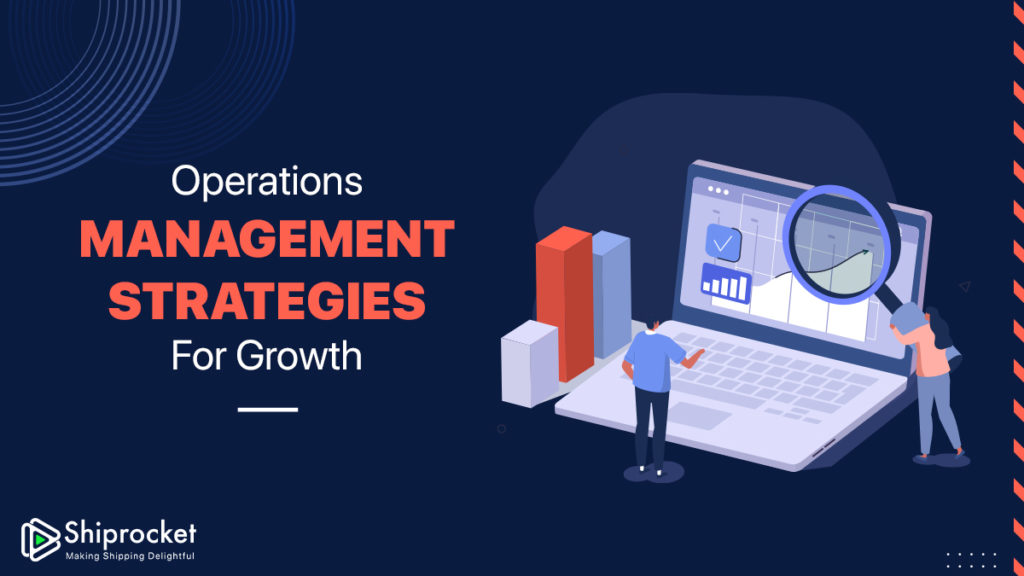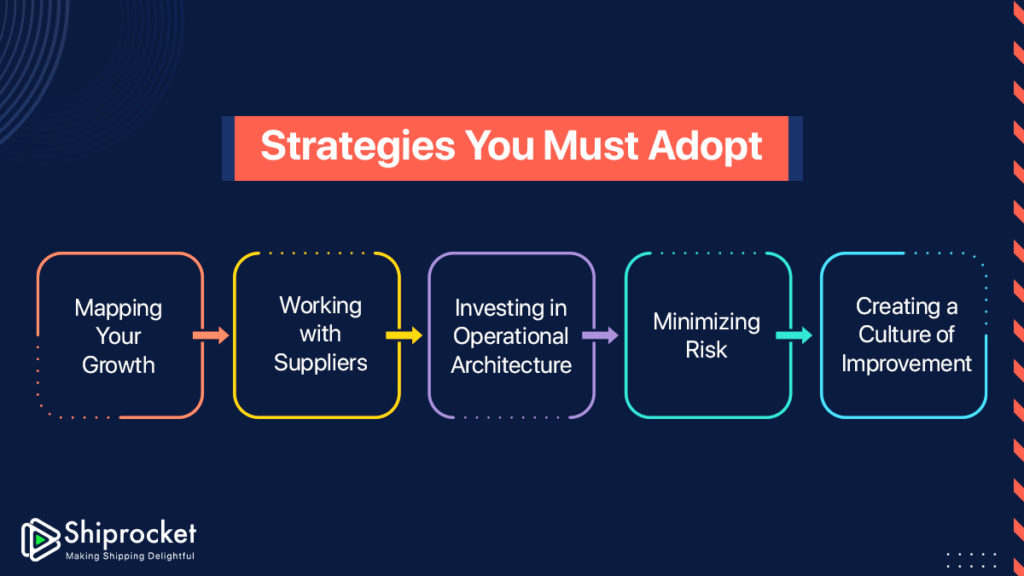Operations Management Strategies for eCommerce
A robust eCommerce operations strategy is a defining factor for successful online retailers. Effective eCommerce operations management hinges on your ability to develop a plan that addresses critical sales elements, including:
- Order Logistics and Fulfillment
- Domestic and Global Shipping
- Inventory Management

It’s essential to make your eCommerce operations strategy as precise and in-depth as possible. Why? Because a well-defined plan of action increases the likelihood that orders are fulfilled and dispatched on time, keeping customers happy and ultimately fueling your success.
Mapping Your Growth
Growth in ecommerce is often considered in terms of revenue driven by marketing and sales. However, growth in product scope is an area that needs to be addressed. How will you introduce new, exciting products to your customers? Why would they buy from you rather than a more extensive, more unavoidably large reseller? Can you get them to come back and buy other merchandise after the first is purchased?
Larger, more established ecommerce sites can overtake the market leaving precious little for smaller areas. To give a consumer a reason to choose you requires a combination of better service, better pricing, and unique products that tie effectively with other products you’re selling. But getting to that point requires being able to work with suppliers seamlessly.
The Remedy: You need to grow your wares by getting the best products earlier and at scale. That may mean expanding your cache of potential suppliers, including going global and taking more of a diversified “online marketplace” approach. Even if you keep inventory, you need to consider how to minimize its impact operationally.

Working with Suppliers
Increasing the number of quality suppliers, particularly in a global space, can be an enormous undertaking for more minor, mid-sized ecommerce companies. The natural inclination is to limit supplier relationships so they can be appropriately managed. But the only way to gain access to more diverse products and build a following is to cast as wide a net as possible.
Scaling the supplier population requires streamlined onboarding and management. There needs to be a straightforward process for making a supplier payable in the system, including gathering payment details, accepting invoices, performing compliance checks, etc. Payment methods, particularly for global suppliers, are essential as not every payment method is optimized for a specific country and amount.
Many times, procurement teams hand off these processes with little support for AP. This breaks the process and can cause additional friction between the supplier.
The Remedy: Smooth out the lifecycle of communications with suppliers and enhance longevity and loyalty. Reduce the burden of onboarding, data gathering, and communicating payment status through a self-service portal. Provide payment choices optimized to your supplier’s country of origin or pay them on their time, rather than a schedule that could negatively affect due dates.
Investing in Operational Architecture
What operational areas should an ecommerce business invest in? Indeed, the big ones around ordering and fulfillment are required. Beyond that, one must look at how the company is likely to scale. If the effort is global, operational investments need to be made in those areas that will make it easier to work with suppliers in other countries. It must also look at goals. Is it possible that a single person in a $100M ecommerce company handles all its global supplier payments in just 15 minutes a day? What would that be worth?
This is also key to maintaining executive integrity around focusing on strategic efforts rather than day-to-day tactics. What areas must be addressed and can be addressed through more automated ways to free executives’ time to be more creative in solving more complex problems?
The Remedy: Take a holistic approach to solve operational problems. Rather than focusing on specific pains, target the points of “hand-off” between systems that add friction. A more integrated architecture can eliminate issues where manual intervention is required.
Minimizing Risk
As the “coordinator” between consumers and suppliers, the risks in ecommerce lie in where things can go wrong. Inventory not arriving or getting the wrong products, so orders can’t be fulfilled, hurt the customer relationship. Returns and chargebacks affect revenue. Matching supplier shipments with payments rely on a certain amount of diligence to data and the ability to adjust prices flexibly. And of course, there are the basic financial controls necessary to eliminate internal and external fraud.
For example, wiring funds to a supplier overseas has an immediate impact. A one-decimal-point typo or sending to the wrong account can be an expensive headache to recover from. It might also not be recoverable, depending on the situation. It’s also embarrassing, but it happens all the time.
The Remedy: To reduce risk, focus on adding a layer of visibility into how these systems manage funds. In other words, follow the money and create the necessary audit trail points that indicate how cash is released. This can reduce the risk of duplicate or questionable payments.
Creating a Culture of Improvement
The only measure for improvement that ecommerce companies need to focus on is productivity. Why? Almost every other area of growth can be addressed with more money. For example, you can always spend more on ads to drive more engagement and ultimately more sales. You can always rent out more warehouse space to hold more goods. You can always reduce the profit margin to undercut another seller. But when it comes to improving those areas, it’s not scalable.
Instead, look at what amount of improvement per dollar spent can yield. Can you find solutions that handle 10 to 100 times what it would take a full-time employee to handle? And can those solutions raise the operational best practices of the organization? Those factors increase your operational capacity and execution excellence, which add significantly to the culture of improvement.
The Remedy: If the organization is steeped in traditionally manual processes, it’s up to senior management levels to stress that strategic insight and agility are more desirable. As such, every operation area that can be streamlined and automated should be looked at for a potential return on investment towards greater profitability and productivity.






